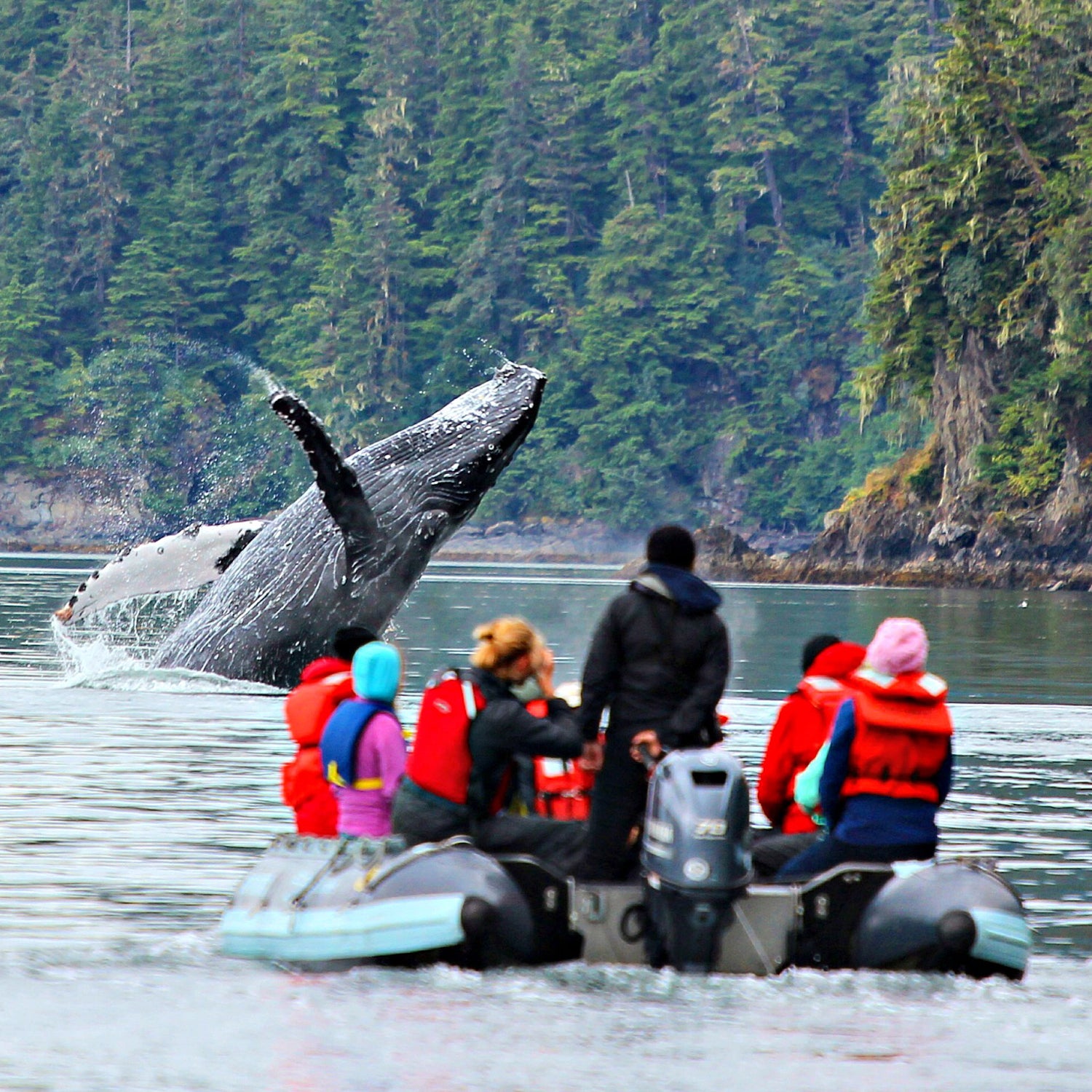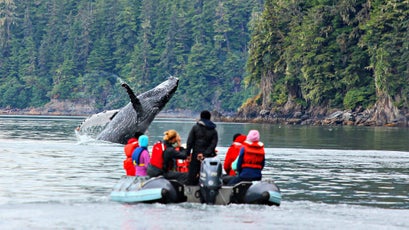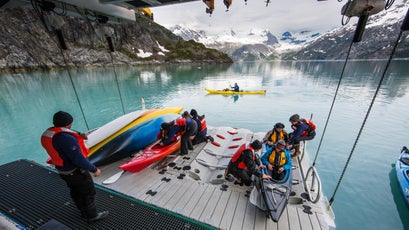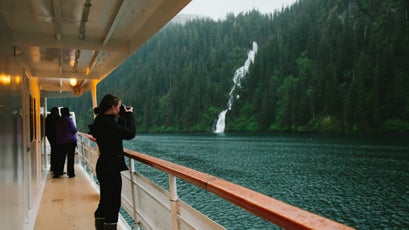When Captain Dan Blanchard, the fit, bearded, 58-year-old founder of , wants to tag along on his 232-foot Safari Endeavour in Alaska, he often needs to pitch a tent on the top deck for a place to sleep. Blanchard’s six Alaskan expedition ships, which carry 22 to 84 guests and serve as luxurious floating base camps for up to 21-night itineraries, are so popular that his revenue in the state shot from $6 million to $33 million between 2010 and 2016.
Blanchard’s success mirrors the . In 2016, a million passengers, about half the state’s yearly visitors, traveled on a cruise ship, generating $2 billion in economic activity. In , 95 percent of the 485,000 visitors arrived on a commercial cruising vessel. Historically, there have been about three times as many big, thousand-passenger ships in Alaska as small ones like Blanchard’s. That trend still holds, but as interest increases, ships of all sizes are becoming more numerous and extending their stays in the region.
The demand is so great that by 15 percent; Holland America is redeploying a seventh ship to the area this summer; and Seabourn is returning to the 49th state for the first time in more than a decade. Last August, 1,000 passengers paid as much as $120,000 to spend 32 days aboard the 820-foot, 13-deck Crystal Serenity as it navigated the Northwest Passage from Anchorage all the way to Manhattan.
Cruise-ship exploration in Alaska is as hot as the destination itself: parts of the state are warming twice as fast as the rest of the U.S., and in places the Arctic was 36 degrees warmer than normal last November. “What we’re seeing is ,” says Scott Gende, a National Park Service scientist based in Juneau. “People want to see glaciers before they melt and polar bears before they’re extinct.” And unless you’re a world-class kayaker or have access to a private yacht, cruise ships are the only way to take in much of Alaska’s remote coastline.
It’s an ironic incentive, considering that the cruise industry is arguably at the front lines of hastening the planet’s demise. Emissions numbers are tough to come by and vary greatly by the grade of fuel used, but in 2012, the estimated that cruise ships and passenger ferries produced 78 million tons of carbon dioxide. And according to a study by the group, large cruise ships burn 50,000 to 60,000 gallons of diesel each day. On a typical day last summer in Glacier Bay National Park, a ton of sulfur oxides were emitted by cruise ships.
New , but instead of using cleaner fuel to comply, many cruise lines are installing technology that scrubs sulfur from ship smokestacks, preventing the pollutant from being emitted into the air and instead diluting and recirculating it into the ocean. And that’s when the ships are operating legally.
In December, the Department of Justice found that . The company pleaded guilty to conspiracy, obstruction, and violating the Act to Prevent Pollution from Ships, and will pay a $40 million settlement. Three of the five Princess ships cited in the case had been used in Alaskan waters.
However, says Gende, despite the environmental problems, “port communities in Alaska want cruise-ship visitation. They bring a lot of money and jobs.”
When it comes to passenger-ship traffic, Alaska’s coast has long been more tightly regulated than other international and U.S. coastlines, because of the state’s Commercial Passenger Vessel Environmental Compliance Program, which monitors wastewater discharge, air quality, waste offloading, and other issues. In the past, that oversight hasn’t been needed on the state’s Arctic coastline, largely because few ships have made ports of call as far north as Nome or Kotzebue. But as sea ice melts, Arctic trips are becoming easier to organize; Crystal Cruises is planning its second voyage through the Northwest Passage in August. In response, Gende, in conjunction with the Wildlife Conservation Society, is heading up an effort to create a nonregulatory Standard Care of Practices for cruising the Alaskan Arctic and the Northwest Passage, slated to be completed before summer.
“One of the things we’re hoping to mitigate is cruise activities disturbing marine mammals or native hunters,” says Gende.
The Crystal Serenity’s first sold-out voyage, and its planned trip for this summer, indicates that there’s plenty of interest, but so far no other major cruise line has planned a Northwest Passage journey. “This voyage was three years in the making,” says John Stoll, a Crystal Cruises vice president. “We’ve set the gold standard for attention to detail and advanced preparations and taken every step possible to protect the environment.”
Friends of the Earth, a watchdog group, on its 2016 Cruise Ship Report Card. “They did the right thing by using cleaner fuel,” says Marcie Keever, an FOE program director. “But they still haven’t updated their wastewater technology, and we’re very concerned about a cruise ship that size going through the Northwest Passage.”As for UnCruise’s Blanchard, growing awareness of the pitfalls of megaships has contributed to his company’s growth. “Most people who travel with us are disgusted by larger ships,” he says.
“Small cruise ships tend to have a higher caliber environmental record,” says Elizabeth Becker, author of . “They pay better wages, have scientists on board, and are very careful about showing guests how to respect the wilderness.”
Still, all trips have an impact on the environment. Friends of the Earth doesn’t evaluate small expedition ships like Blanchard’s, but the Safari Endeavour burns up to 5,000 gallons of diesel per week. “We have to get real with ourselves,” Blanchard says. “If the region were overrun with people like us, that would be a problem.”





